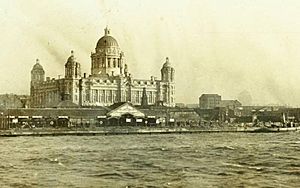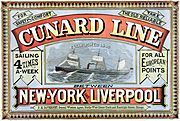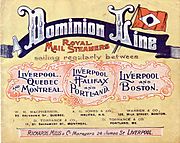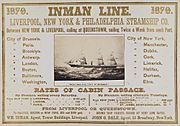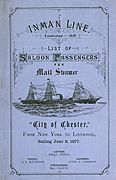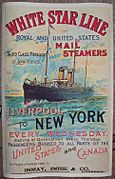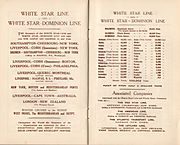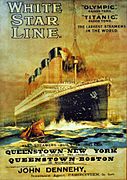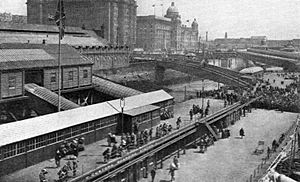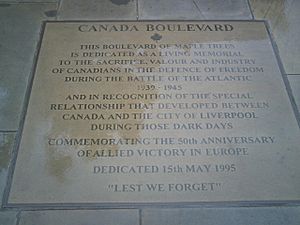Pier Head facts for kids
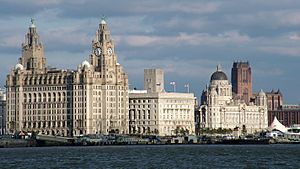
The Pier Head is a famous spot right by the River Mersey in the heart of Liverpool, England. It's a special part of the Liverpool Maritime Mercantile City area, which was named a UNESCO World Heritage Site in 2004. This means it's a place of great importance to the world.
The Pier Head has many well-known buildings, open spaces for people to enjoy, and several memorials. For a long time, it was also the main place where passenger ships arrived and left the city. Some ships still use it today!
Contents
History of the Pier Head
By the 1890s, the George's Dock, which is where the Pier Head is now, was not really needed anymore. It was built way back in 1771, making it Liverpool's third dock. But it was too small and not deep enough for the big ships used in the late 1800s.
Most of this land belonged to the Mersey Docks and Harbour Board, a group set up by the government in 1857. A small part was still owned by the City of Liverpool itself. These two groups had different ideas for the land.
In 1896, they started talking about what to do. The city wanted to buy the land, saving a part for the Board's new offices. After two years of talks, they agreed! The city paid £277,399 for the land. The Board kept a piece for its own building.
The Board quickly started planning its new headquarters. They held a competition for local architects, judged by Alfred Waterhouse. Even though some people thought architects from other places should be allowed, a local firm called Briggs, Wolstenholme, Hobbs and Thornley was chosen. They designed a grand building with a large dome, and construction began in March 1903. The building opened in the summer of 1907.
The city had hoped to find other companies to build on the remaining land, but no one came forward. So, they decided to sell the land. In 1905, no one even bid for the sites at an auction.
The next year, the Royal Liver Friendly Society wanted to build their new headquarters there. They offered £70,000 for a site, which was less than the city wanted. Some people were worried about how tall the new building would be, calling it "England's first skyscraper." But after much discussion, the city approved the plans.
The last of the three main spots at Pier Head was first planned for city offices and public baths. But this idea didn't work out. Later, a combined public baths and customs house was suggested, but that also fell through. Finally, in 1913, the Cunard shipping company decided to build its new main office in Liverpool. The Cunard Building was made of strong concrete and covered in a special stone called Portland Stone. It was designed to look like grand Italian palaces.
In 2002, there was a plan to develop the Pier Head area called the "Fourth Grace" project. The winning design was a building called "the Cloud." However, this project was stopped in 2004 because the plans for the waterfront changed too much.
In 2007, work began on a new project: a new home for the Museum of Liverpool. This museum opened in 2011. Also in 2007, work started on a canal link to connect the Leeds and Liverpool Canal to the city's South Docks. This 1.6-mile extension cost £22 million and opened in 2009. It allows boats to travel from the existing canal, past the Pier Head, and into the city's docks.
Famous Buildings: The Three Graces
The Pier Head is famous for three amazing buildings, often called "The Three Graces" since at least 1998. They stand where the old George's Dock used to be:
- The Royal Liver Building: Built between 1908 and 1911, this building has two clock towers. On top of each tower is a mythical Liver bird, which is a symbol of Liverpool. This building is the main office for the Royal Liver Friendly Society. It's a Grade I listed building, meaning it's very important and protected.
- The Cunard Building: This building was constructed between 1914 and 1916. It used to be the main office for the Cunard Line shipping company. It's a Grade II* listed building.
- The Port of Liverpool Building: Built from 1903 to 1907, this was once the home of the Mersey Docks and Harbour Board. It is also a Grade II* listed building.
There's also the George's Dock Building nearby, built in the 1930s. It holds offices and equipment for the Queensway Tunnel. It is a Grade II listed building.
Places to Board Ships
Ships to Other Countries
- Trans-Atlantic shipping
-
Cunard Line, 1875
-
White Star Line and White-Star Dominion Line, routes 1923
-
White Star Line 1910s
The Prince's Landing Stage was once located at the Pier Head. It was used for large ships traveling across the Atlantic Ocean. Several of these stages were built over Liverpool's history. The most recent one opened in the 1890s and was connected to the George's Landing Stage next to it. Together, they were almost half a mile long! Both were taken apart in 1973 after the Atlantic ship services from Liverpool stopped.
Mersey Ferries
The famous Mersey Ferries leave from George's Landing Stage. This stage is owned by the Mersey Docks and Harbour Company. The ferries travel to Woodside in Birkenhead and Seacombe in Wallasey.
A new landing stage opened in 1975, but it sank a few months later due to unusual weather. In 2006, it sank again because of similar weather and a very low tide. A temporary stage was used until 2010, when work started on a brand new one. During this time, Mersey Ferries used the Liverpool Cruise Terminal.
A completely new landing stage for the ferry was put in place in November 2011. It officially opened in January 2012, and services started again on January 9th.
Isle of Man Ferry
The Isle of Man Steam Packet ferry service also operates from Princes Landing Stage. It uses a spot right next to where the Mersey Ferries dock.
Getting Around: Land Transport
Besides the Mersey Ferries, the Pier Head used to be a big hub for trams and later buses.
Merseyrail's James Street station is just a short walk away. This station was part of the old Mersey Railway. The Pier Head also used to have its own stations: Liverpool Riverside station, which connected to main train lines, and Pier Head railway station, which was on the Liverpool Overhead Railway. Both of these old stations have since been taken down.
Open Spaces and Memorials
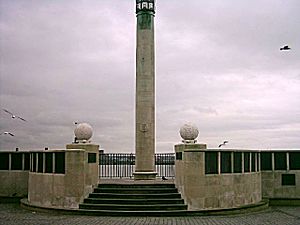
The open area at the Pier Head has also changed over time. In the 1960s, it was used as a bus terminal. In 1963, the ferry terminal building was updated to include a restaurant. In 1991, the ferry terminal was redesigned to how it looks today.
Running along the open area is the Canada Boulevard. This walkway has special plaques that remember Canadians who died during the Battle of the Atlantic in World War II.
In the middle of the space, there's a statue of Edward VII on a horse, which was put there in 1921.
Memorials to Remember
The Pier Head also has several memorials to honor important events and people:
- The Titanic Memorial: This memorial remembers the brave engineers who stayed at their posts during the sinking of the RMS Titanic.
- The Cunard War Memorial.
- The Alfred Lewis Jones memorial.
- The Merchant Navy war memorial.
More recently, new memorials have been added. In 2013, memorials were put up for Captain Johnnie Walker, a convoy leader in World War II, and for the RMS Lancastria. The Chinese Merchant Seamen's Memorial, which honors Chinese merchant sailors who served and died for Britain in both World Wars, was unveiled in 2006.
See also
 In Spanish: Pier Head para niños
In Spanish: Pier Head para niños


